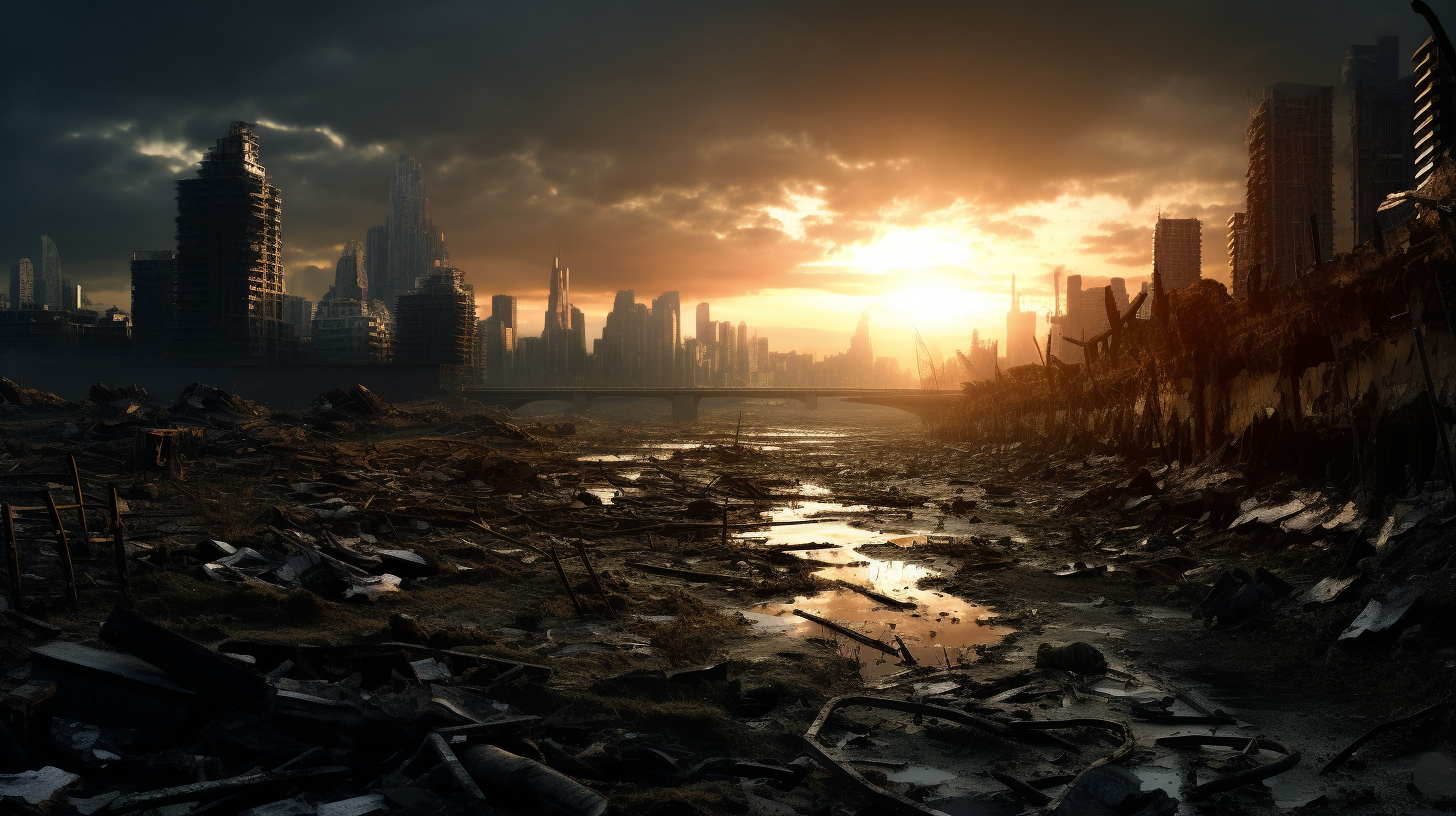In a world where the once radiant blue skies now resemble a permanent grayscale watercolor painting, humanity stands at the brink of eco-collapse. Our pursuit to reverse the devastation on our climate enters what many call “The Last Surge.” It’s an era characterized by frantic, last-ditch efforts to claw back the paradise we’ve pillaged beyond recognition. In this bleak landscape, whispers of reforestation and carbon capture do little to mask the booming echoes of glacier calving and burning forests.
“We tried, we really did.” The words, draped in defeat, come from Dr. Selina Myres, one of the leading climate scientists working on ‘Project New Dawn’. The venture aimed at an extensive albedo modification program, creating high-altitude clouds to reflect sunlight. “But the parameters have exceeded our most alarming models,” Myres admits, a testament to the relentless acceleration of climate aberrations.
In corners of the earth where the ocean was once a life-giving force, we now witness the reverse engineering of evolution: saline levels turning landscapes into deserts, marine life gasping for a drop of oxygen. The ‘Oceanix Cities’, floating metropolises, epitomize the irony of human innovation – a brilliant solution yet a resounding acknowledgment of terrestrial defeat.
As CO2 levels scale new heights, afforestation efforts that could redefine desolate lands are overshadowed by consumption patterns unchanged and industries unfazed by their carbon footsteps. Initiatives to plant billions of trees stand as mere toothpicks against the tsunami of climate impacts. Despite innovations in carbon capture technology, the machines that could cleanse our air lie dormant, starved of the investment needed to mass-produce our way to cleaner atmospheres.
Geoengineering presents a seductive promise, its premise simple: deliberate, large-scale interventions in Earth’s climate system to counteract global warming. Yet, a perturbed Mother Nature retaliates with unforeseen fury, casting doubts on the wisdom of humanity’s tampering. “Solutions like stratospheric sulfate aerosols are double-edged swords,” cautions environmental ethicist Dr. Johan Renn. “The adverse effects could be as concerning as the threats they aim to mitigate.”
The solemn march towards renewable energy can’t outpace the entrenched reliance on fossil fuels. Solar panels and wind turbines proliferate, yet the dark cloud of coal and oil reliance still looms large. Innovators wrestle with energy storage conundrums while policymakers juggle the emissions ledger, attempting to balance climate action with economic stability.
Public sentiment teeters between awakening and apathy. Protests fill the streets with chants and placards, a rhythmic heartbeat of a society on life support. Youth movements, fueled by passion and terror for their future, inject some vitality into the fading hope for change. Yet, conflicting interests and misinformation campaigns erode the common ground on which collective action must stand.
The Last Surge isn’t just about technological advancements or scientific breakthroughs; it’s about the ethos of survival and the relentless human spirit. As we witness species blink out of existence and megastorms becoming the norm, this surge is as much about adaptation as it is about remediation. Communities learn to thrive in floodplains, and in the choking haze of wildfires, some still hold on to an ounce of resilience to fight the good fight.
This chapter of our history won’t be remembered for the silence of the skeptics or the clamor of the activists. It will be etched in the annals as a time when synthesis was sought between the forces of human ingenuity and the immutable laws of nature. We stand at a cliff, watching the final surge crash against the rock face. Whether this wave will be the one that reverts our trajectory or the one that seals our fate, only time will tell. But one thing is certain: there is no encore in this performance. The time to act was yesterday, the opportunity to hope is today, and the risk of remorse is tomorrow.
